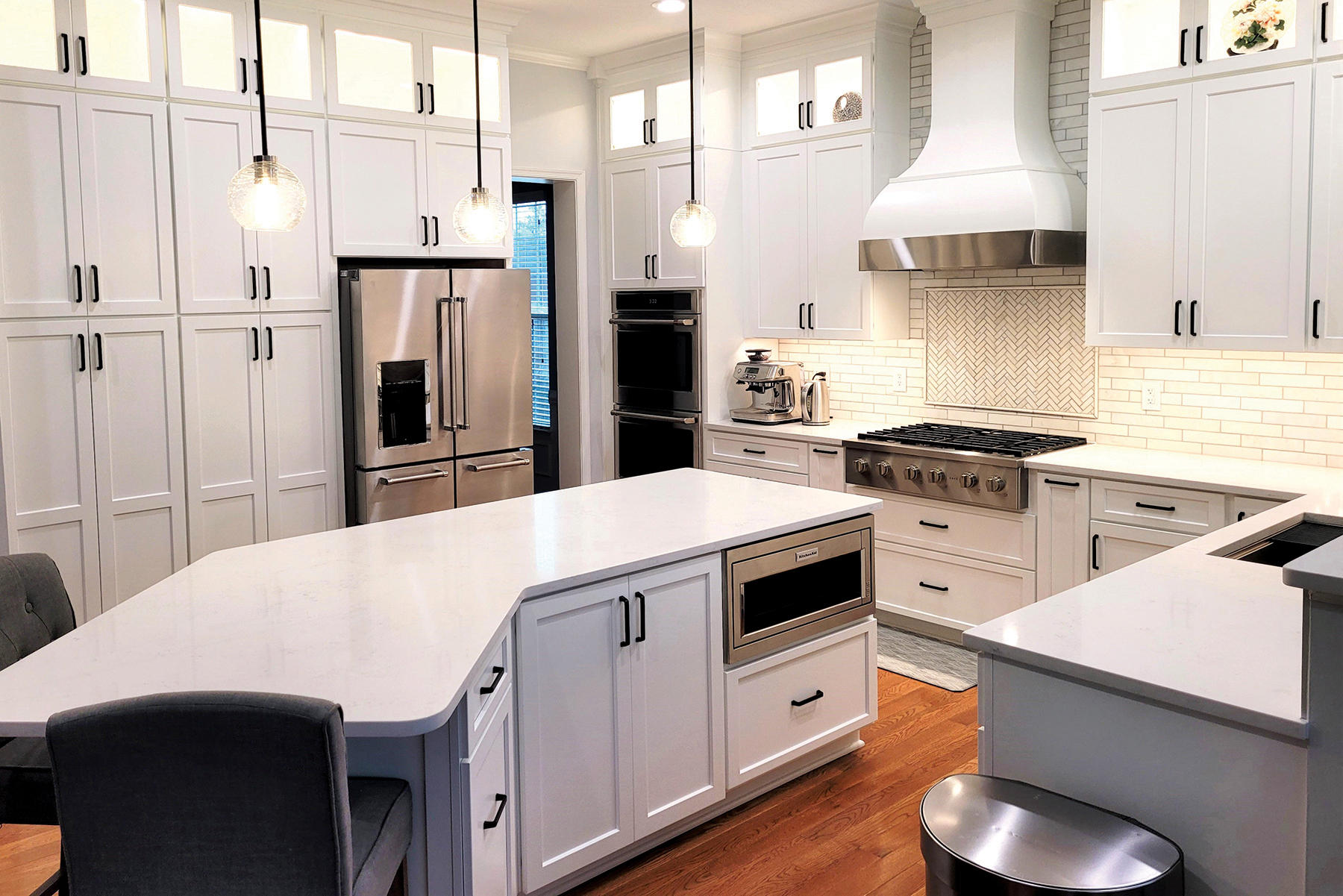Kitchen Cabinets
Crafting Style And Functionality

We all love our kitchens – they are the heart of every home. Despite this, the average homeowner only embarks on a kitchen remodel once or twice in a lifetime. As a result, many are either unfamiliar with the intricacies of a kitchen remodel or can barely recall the details from their last renovation, which might have been years ago. It’s crucial to note that the landscape of kitchen design has evolved significantly since your last remodel, and understanding the nuances of cabinets is key to a successful kitchen redesign.
Cabinets stand as the cornerstone of any kitchen remodeling project, driving the overall design of the space. To successfully navigate the journey of kitchen design and cabinet selection, there are some important things you should know.
Prior to the mid-1980s, kitchens predominantly featured “built-in” cabinets, custom-made piece by piece and crafted individually to fit specific spaces. But then a paradigm shift occurred and manufacturers started to mass produce standard cabinet sizes and types, selling them as stock products through wholesale or retail distribution channels. This marked the emergence of what we now call “stock” cabinets. In contrast, “custom” cabinets offer flexibility in terms of size, color, and door style, but they usually cost much more and are often of higher quality compared to their stock counterparts.
Stock kitchen cabinets come in standard types and sizes and are designed to fit together much like Lego blocks. While some are exceptionally constructed in a wide array of wood species, door colors, and styles, offering various cabinet functionalities such as sink bases, oven wall cabinets, microwave cubbies, angled cabinets, wine racks, and more, others may fall short in terms of selection or use lower-grade materials like MDF (think particle board). Fortunately, most good stock cabinets feature sturdy plywood boxes and maple or other hardwood fronts and doors from well-known manufacturers. The stock cabinetry industry has maintained affordability through mass production, and is able to meet the quantity demands of today’s market, when fewer young people are entering into the carpentry skilled trades. Its landscape has evolved considerably, with hundreds – maybe thousands – of cabinet manufacturers now operating in the United States, and much of the manufacturing being outsourced overseas to Vietnam and Malaysia. Consequently, stock cabinets dominate the market over custom ones, due to their affordability and availability.
However, the one big catch with stock cabinets lies in their specific color and style options, usually limited to one or two dozen combinations. This lack of variety is unbeknownst to many homeowners. To counteract this limitation, good kitchen remodelers must offer multiple stock product lines to expand offerings so you have more options from which to choose.
Another solution to overcome the constraint of limited selection is what is referred to as “semi-custom” cabinets. With this option, homeowners can choose any color and door style offered by the semi-custom cabinet manufacturer, thereby creating their own personalized combination. Companies employing this semi-custom approach, along with producing cabinets in any size, essentially mimic custom cabinetry specified by homeowners and remodelers, but at a more affordable cost.
So, what’s the best approach for your next kitchen remodel? If your budget is modest and you can find satisfaction in popular colors and styles, work with a kitchen remodeler who offers multiple stock product lines, and find one you like. On the other hand, if you have very specific ideas of what you want in terms of colors and door styles, then the semi-custom cabinet lineup may be ideal. For those seeking particular features and unique shapes across their entire kitchen, such as a built-in dog crate, a distinctive door profile, or all false drawer fronts on the island facing the living room, engaging a custom cabinet maker becomes essential.
It’s worth noting that even with stock cabinets, your remodeler’s carpenter can customize certain aspects to ensure a proper fit within your home’s space. This common practice differs from incorporating custom cabinets, and a minimal amount of customization to stock cabinets won’t significantly impact costs, and is usually necessary.
Lastly, keep in mind that there are third-party accessories available to enhance stock cabinets to further satisfy your needs and wants, including knife holders, spice rack pull-outs, utensil holders, pull-out trays, and more.
With an array of cabinet options available, partnering with a kitchen remodeler can be the best route to help you navigate the renovation process, helping you achieve the kitchen of your dreams without breaking the bank.
David Slater
Principal and owner of Azalea Kitchens of Wake Forest.
- azaleakitchensnc.com
- 919-330-0100

